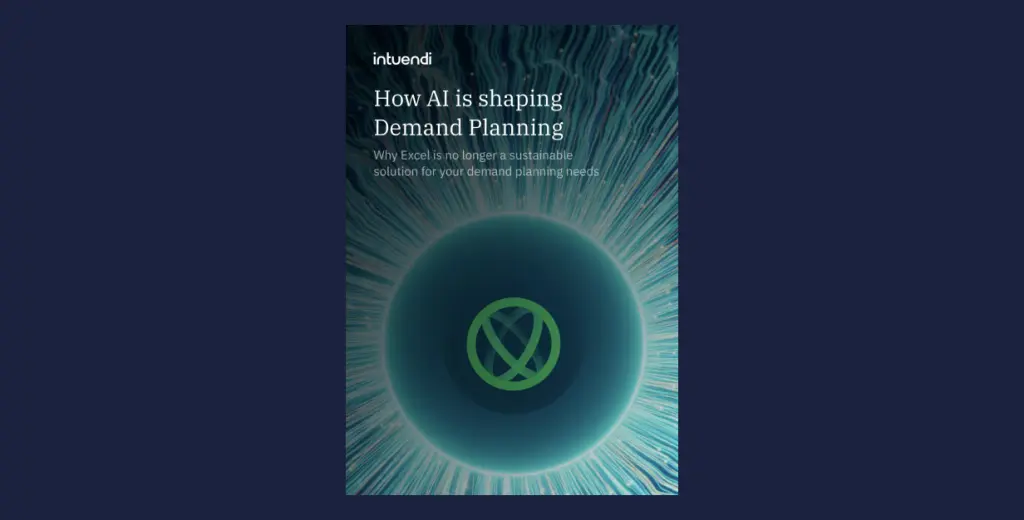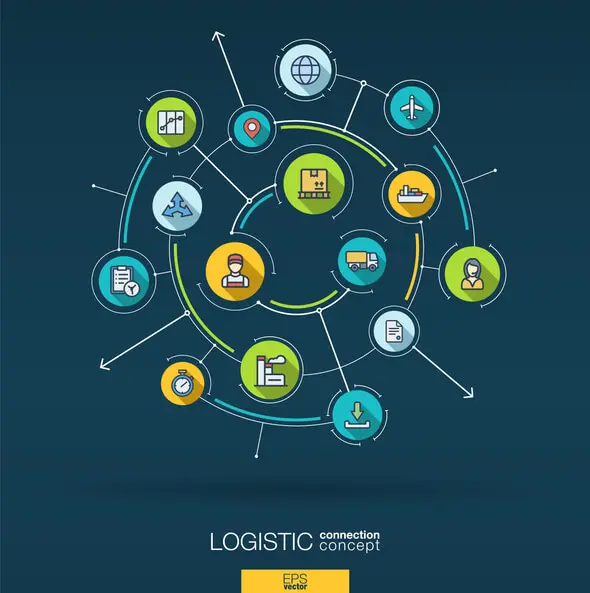A vital part of business management is that of aggregate forecasting. In the often uncertain business world, aggregate forecasting allows you the opportunity to plan through optimizing resources. This is crucial when it comes to achieving your organization’s strategic goals, as demand fluctuations have a direct impact on profitability and customer satisfaction. This article will provide you with an in-depth explanation of what aggregate forecasting is, the methods and techniques used to calculate it, its benefits, risks/challenges, and mitigation, a practical guide on how to calculate it, the tools and techniques that can be used, and how to factor in business growth.
What is Aggregate Forecasting?
The process one uses to estimate future sales or demand of any product or service at an aggregate level is called aggregate forecasting. This type of forecasting generally uses a lower level of detail in its research, which reduces the complexity and uncertainty of managing business forecasts, while also helping you to align functions, coherence, and consistency throughout the various units within your business. Retailers are a good example of an industry that benefits hugely from aggregate forecasting, as this enables them to forecast the demand for various categories of products. This further enables them to allocate the correct amount of shelf and inventory space needed. Manufacturers need to forecast the demand for their various groups of products in order to plan and align their production levels and the distribution of those products accordingly. Airlines and hotels also make use of aggregate forecasting to determine the demand for certain flight routes and room types needed over a certain period, for example, flights and accommodation in France during the Rugby World Cup, or in ski resorts over winter holidays.
Forecasting Aggregate Demand
One of the biggest challenges in aggregate forecasting is that of forecasting aggregate demand. Various factors are considered when forecasting demand, such as customer and market trends, historical data, the economy, and external events. This requires you to be thorough and systematic. If you are unfamiliar with forecasting the aggregate demand and feel you might need some extra guidance, here are a few steps generally followed when forecasting aggregate demand:
- Decide what product or service category you are forecasting for, how long a time period you are forecasting for, and how often you will be forecasting i.e., weekly, monthly, etc.
- Collect all your relevant data, including customer segments, historical sales, seasonality, and any promotions.
- Choose which forecasting technique to apply such as time series or regression analysis, judgmental methods, or causal modeling.
- Ensure that you communicate your forecast to your managers, staff, planners, and suppliers.
- The accuracy and reliability of your forecast must be validated by using measures such as mean squared error, mean absolute error, or mean absolute percentage error.
Methods and Techniques of Aggregate Forecasting
The methods and techniques of aggregate forecasting vary, depending on the nature and purpose of the forecast. Like all methods, techniques, and strategies available in the business sphere, you are able to find some strengths and weaknesses, advantages, and disadvantages within those allocated to aggregate forecasting. The application of these methods and techniques will differ in different business settings, data availability, or levels of complexity and uncertainty. Choosing the best technique or method for your company depends mostly on how up-to-date and accurate your data is, and how complex your forecast needs to be. Sometimes a combination of quantitative and qualitative techniques will need to be used to increase the accuracy of your forecast.
Bottom-up forecasting method allows you to forecast at a higher level of aggregation, as you would be forecasting individual products or services. This method is only suitable when there are consistent patterns of demand for individual products with detailed and reliable data. It can, however, be more time-consuming and complicated, but is more accurate because it includes much more data and synchronizes multiple forecasts. The mirror image of bottom-up forecasting, we have top-down forecasting. This method is suitable when you have less reliable, limited data at a lower level, thus best used in situations with more volatile demand patterns. Here you get the aggregate forecast of individual services or products by disaggregating the forecast of a higher-level aggregation. While this method is faster and involves fewer calculations, its uniformity across different products and services makes it less flexible and accurate.
Moving onto the quantitative technique, a mathematical-based method: This includes time series analysis, which examines historical data to identify patterns and trends; regression analysis, which uses variables to find connections and estimate effects; and causal modeling, which relies on identifying causal factors that help to predict potential impacts on demand. The qualitative technique is a more human-based method. It is always important to remember that human connection and experience are intrinsically linked to buying behavior. It is, therefore, of utmost importance to study human trends through judgemental methods, which rely on the opinions of experts to make forecasts; survey methods, which can establish customer expectations and utilize customer feedback for forecasts; and the Delphi method, which uses a repetitive process of consultations to get a consensus on a forecast.
Advantages of Aggregate Forecasting
When aggregate forecasting is implemented effectively, it can benefit your business in many ways. It can improve operational efficiency through better planning and use of resources. It leads to enhanced customer satisfaction by exceeding their every expectation when it comes to delivery, service, and availability. And most importantly, it increases profitability by reducing costs as far as holding, production, and transportation are concerned, all whilst increasing sales. An excellent example of this is Walmart. Walmart manages its global supply chain by using a sophisticated and integrated system of aggregate forecasting. This enables them to optimize their inventory and distribution network while lowering their costs and increasing customer satisfaction.
Challenges and Associated Risks
While there are numerous benefits that come with aggregate forecasting, many of which are listed above, it is not a full process without challenges and risks. Due to the variety of factors that influence the reliability and accuracy of an aggregate forecast, it is essential that one is aware of the challenges that may accompany implementing it. Likewise, one should know the steps to take in order to mitigate them. The first challenge relates to the amount and quality of available data. If there is limited data, one might not have enough information to create an accurate forecast. Conversely, when there is a lot of data one can often find gaps, errors, and inconsistencies. For this reason, it is necessary to ensure that data is being obtained from reliable sources and that appropriate data-cleaning techniques are put in place to remove errors. Updating this data frequently will ensure continued relevance and accuracy.
Another challenge that occurs is selecting the best forecasting technique for a business. If a business chooses a technique randomly, they risk incompatibility and unnecessary complexity in application. To mitigate this, one should carefully consider the nature of the forecast for their business. Ask, “What purpose is the forecast meant to serve?” Using a combination of quantitative and qualitative forecasting methods can also help to address any initial uncertainties. Following the selection of technique, the next challenge arises in the evaluation of a forecast. If a business uses inadequate evaluation methods and criteria to determine the validity of its original forecast, then inaccuracies can unintentionally be overlooked. These inaccuracies include forecast error, which is the overestimation or underestimation of demand by the forecast; forecast bias, wherein demand differs from the forecast due to human judgment or data manipulation; and forecast uncertainty, which is when the forecast horizon is affected by external events that lead to demand volatility during that period. Similarly, if evaluation is being done too seldom, it will become more difficult for a business to respond quickly to changes in demand. Using consistent measures to validate the forecast by comparing it to the actual demand and benchmarks will solve this challenge smoothly, as it allows one to adjust their forecasting method to remove errors and biases. Likewise, conducting evaluations regularly will counter forecast uncertainty and lead to swift response times.
The final risk is related to the dissemination and communication of the aggregate forecast. If communication channels and formats are not established, then a forecast can be rendered ineffective due to recipients not being reached timeously. This can be prevented by setting up a clear communication channel that provides concise and relevant information to the appropriate employees, stakeholders, and suppliers. With this awareness of the challenges that lie ahead, we can now discuss the basic steps of calculating an aggregate demand forecast with some assuredness.
Calculating Aggregate Demand for a Demand Forecast
The actual calculation of an aggregate forecast is what will enable a business to the total amount of products/services that customers will require during a certain time period. This means that the business can prevent overproduction and underproduction, which result in wastage and loss of sales respectively. Let us look at the various steps in the context of a hair salon that sells shampoo, conditioner, curling irons, hair straighteners, hair ribbons, and scrunchies:
The first step requires one to identify the desired level and scope for the aggregate forecast. This means determining the product/service categories or market segments that one will use. Our hair salon’s stock can be categorized as hair products, hair tools, and hair accessories. Keep in mind that if a business has multiple stores, then aggregation will have to be done on a regional level and not based on a single store.
Step two involves utilizing your chosen demand forecasting technique to obtain a forecast for each product/service within the chosen aggregation level. The hair salon’s demand forecast will provide the estimated number of shampoos and conditioners that will be required for the next six months.
The third step is to sum up the demand forecasts for each product/service to calculate the aggregate demand for the chosen level. The hair salon will sum up the number of shampoos and conditioners to get a total for the aggregate forecast of hair products.
The final step is to adjust the aggregate forecast based on additional factors, including seasonality, promotions, and other external events. The hair salon will be having a two-for-one special on shampoos for one of the six months in the forecast horizon. This could lead to an increase in demand requiring them to order additional products.
An example of a business that has effectively calculated its aggregate demand forecast would be Coca-Cola. They have used sophisticated calculations to help them manage their global beverage portfolio and optimize their production and distribution of products. This example serves as evidence of the importance of correct calculations. But if you are new to these calculations, there are plenty of tools and technologies available to assist you with the process.
Tools and Technologies for Aggregate Forecasting
Modern software tools and technologies have not only been able to automate the aggregate forecasting process but also enhance it. It reduces the time and effort spent on calculations, improves forecast accuracy by removing errors and biases that are inherent in humans, and boosts the adaptability of the forecast by allowing for easy adjustment of parameters and incorporation of new data. Technology can also assist people in the evaluation and communication steps of aggregate forecasting. So, what are the types of tools available?
The most common tool used in aggregate forecasting is spreadsheet software, such as Microsoft Excel. This software can be used for basic calculations, data analysis, and the visualization of aggregate demand in the form of charts and graphs. For those who require more advanced calculations, data mining, and data analysis, statistical software like R and SPSS come into play. Statistical software is capable of applying multiple different forecasting techniques to produce the aggregate demand forecast best suited for your needs. Then we have simulation software. Simulation software, like Simul8 and Arena, enables businesses to test different scenarios and determine the impact of various factors on aggregate demand. Lastly, one must consider that the advances in machine learning and artificial intelligence (AI) have made their mark on aggregate forecasting. In particular, Amazon utilizes AI to forecast demand for the millions of product categories on its website. It has proved exceptionally beneficial for them as it has optimized their inventory and delivery network.
But how should one go about selecting a suitable tool for their business? Start by determining the current and future forecasting needs for the business, such as the scope, frequency, and forecasting horizon. Then compare the features offered by various technologies, specifically focusing on the forecasting techniques, evaluation and communication methods, and data sources available. The costs versus benefits of these tools must then be considered to ensure that the return on investment is worthwhile for your business. Whichever tool you choose should be able to accommodate your business as it grows.
Choosing the Best Aggregate Forecast for Growth
Business growth happens for a multitude of reasons, whether it be market expansion, competitive advantage, or an increased customer base. This results in an increase in demand and greater complexity in demand forecasting. To choose a forecasting technique that will support business growth you need to define the growth objectives, such as the target customer or target performance. Once they are defined you must analyze the growth promoters and barriers, including customer preferences and your competition. Your analysis will allow you to determine growth assumptions for your business, such as expected growth rate, pattern, and duration. Once you have all of this information you will be able to choose the aggregate forecasting technique and model that is best suited to the specific needs of your business. For example, Netflix selected an aggressive aggregate forecasting method to support its international expansion, based on its knowledge of its customers’ preferences and their competitive advantage.
Conclusion
Aggregate forecasting is a complex process, but one which is vital in the modern world of business management. By practicing this concept, a business is able to optimize its use of resources and operate smoothly in an environment wherein demand fluctuations impact profitability and growth. It is important that methods and techniques chosen to complete aggregate forecasting tasks are done so while keeping your business goals top-of-mind. If your company has the means, we highly recommend introducing technology when selecting a forecasting method, as this can help streamline, optimize, and improve the overall aggregate forecasting process.
Learn how intuendi can help your business.






